 Are you wondering how your competitors are using social media?
Are you wondering how your competitors are using social media?
Have you explored what works for other businesses?
If you analyze the social media efforts of other businesses you'll find insights to improve your own social media marketing.
In this article you'll discover four ways to research what your competitors are doing on Facebook, Twitter and Google+.

Listen to this article:
Where to subscribe: Apple Podcasts | Spotify | YouTube Music | YouTube | Amazon Music | RSS
#1: Find Shared Fan Interests
Facebook Graph Search is a great tool for finding out what's working for other brands on Facebook.
One way to gather useful information is to search for the interests of people who like a brand's page. For example, if you're researching Levi's, use the search query “interests liked by people who like Levi's,” as shown here.

Gathering this information helps you identify content that may resonate with your customers and prospects. Track different interests and identify people who share similar interests.
You can also search for Facebook groups joined by people who liked a certain page. For example, search for “groups joined by people who like Levi's.”
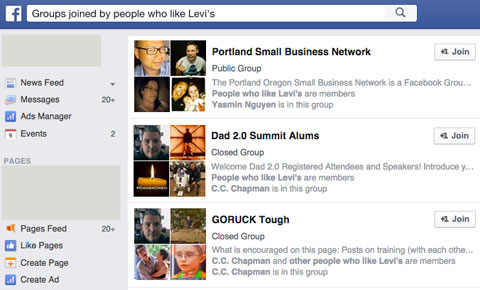
Now you can target Facebook groups to attract potential customers. Inbound marketing helps you do that. Participate in group discussions and offer solutions to other members' problems. However, don't post promotional content unless it's beneficial to the group.
Another way to gather data is to find common connections between different brands in your industry. If you want to refine your search, add a specific location. For example, search for “people who like Levi's and like Social Media Examiner and live in California.”

When it comes to Facebook Graph Search, the sky is the limit. Use as many combinations of search queries as you want to research different audiences. The new search tool also offers several tabs for refining your searches, as shown here.

You can use all of the information you gather to develop a potential buyer persona and target your ads more effectively.
#2: Compare Facebook Activity
Fanpage Karma is a must-have tool for monitoring the Facebook activities of other brands in your industry.
Get World-Class Marketing Training — All Year Long!
Are you facing doubt, uncertainty, or overwhelm? The Social Media Marketing Society can help.
Each month, you’ll receive training from trusted marketing experts, covering everything from AI to organic social marketing. When you join, you’ll also get immediate access to:
- A library of 100+ marketing trainings
- A community of like-minded marketers
- Monthly online community meetups
- Relevant news and trends updates
There are both free and paid versions of the tool available. To try out the free version, enter the name of the Facebook page you're interested in and then click the Get Free Insights button.
The results page lists a number of different metrics. Click the Times and Types tab to see the page's posting pattern for each day of the week. This data helps you measure engagement on a given day. In the example below, Wednesday is the most popular day to post.
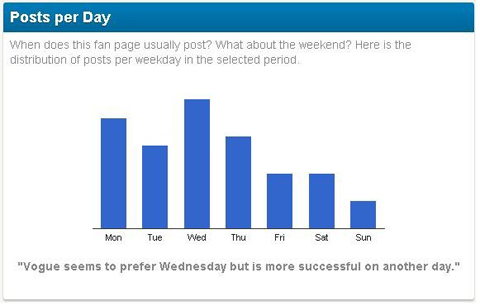
Next, find out which time slots provide the best engagement. For this Facebook page, posts get the most engagement on Sunday afternoon, as shown here.
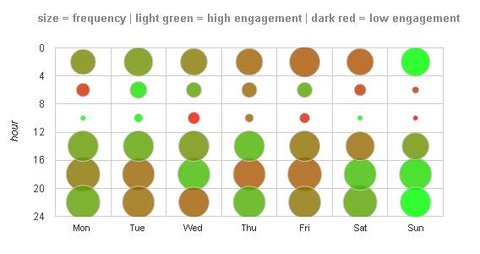
Now look at the data from both charts. The second chart indicates Sunday afternoon is the best time to post. However, the first chart shows the page posts the most content on Wednesday.
The key takeaway is that it's important to post the right content at the right time to ensure maximum engagement.
On the Content tab, you can see the page's most effective hashtags, and which words and topics are used most often in posts. The bigger the words, the greater the engagement.

Fanpage Karma also shows you where the fans of a page are located, revealing targeted geo-locations. This information helps you determine which locations you may want to target for future campaigns.
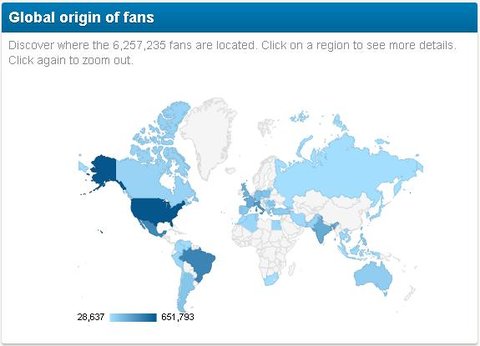
Another metric on the report relates to service level. How often does the brand respond to questions and concerns from Facebook fans? If the brand tends to ignore posts from fans, those fans may feel that their opinions aren't valued.
In the chart below, you can see that this brand ignores 69% of fan page posts and deletes 8.5% of them. Remember, if you don't value your audience, they may not value you.
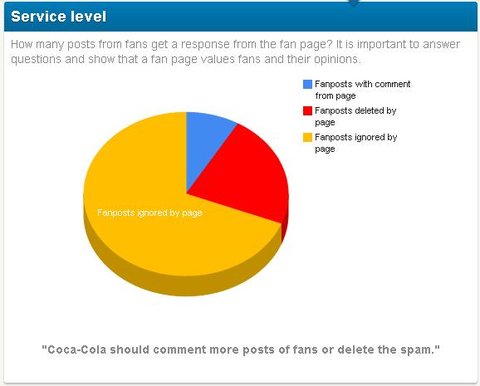
These unsatisfied customers are potential leads for you. To find out more about these people, look at the Recent Posts by Others section of the brand's Facebook page.

Discover Proven Marketing Strategies and Tips
Want to go even deeper with your marketing? Check out the Social Media Marketing Podcast! Publishing weekly since 2012, the Social Media Marketing Podcast helps you navigate the constantly changing marketing jungle, with expert interviews from marketing pros.
But don’t let the name fool you. This show is about a lot more than just social media marketing. With over 600 episodes and millions of downloads each year, this show has been a trusted source for marketers for well over a decade.
You'll also want to look at the ad budgets of other brands in your industry so you can gauge their investment in Facebook marketing. In the chart below, this brand spends 4,424 Euro weekly on Facebook ads.

Take a look at how your ad budget compares to other brands. Also compare your reach with this data and revise your ad budget if needed.
#3: Analyze Twitter Audiences
Twitonomy shows you what's working for other brands in your industry on Twitter. The tool also lets you track the major interests of others' followers.
After you sign in, enter a brand profile name in the search box under Analyze a Twitter Profile and then press Enter.
On the results page, check out which hashtags are working for this brand.
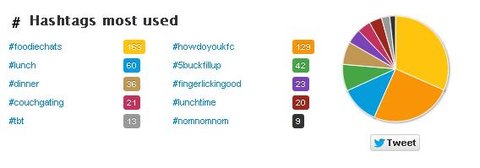
Hashtags are clickable, and they redirect Twitter users to a dedicated page. If you want to attract the customers of other brands, use some of their popular hashtags in your posts.
Tracking conversations with these hashtags can be beneficial. Participate in some of these discussions, but make sure you provide helpful information.
Another metric that Twitonomy tracks is power users, as shown here.
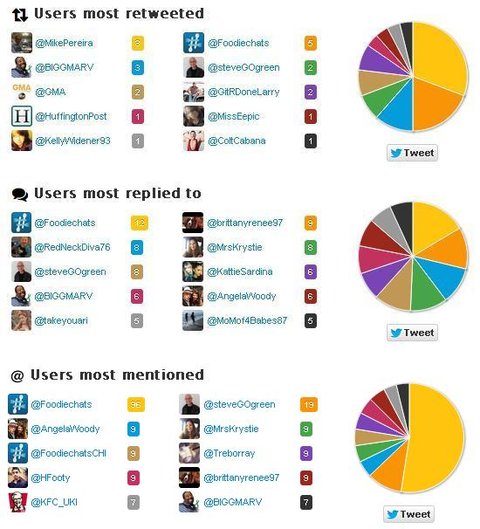
All three groups of people—users most retweeted, users most replied to and users most mentioned—are important because these are the users the brand interacts with. Visit the Twitter profiles of a brand's power users and check their influence on their respective communities.
For example, @Foodiechats is tops in all three categories above, so this user may be a potential customer for you. To find out more about a user's influence, look at his or her profile.
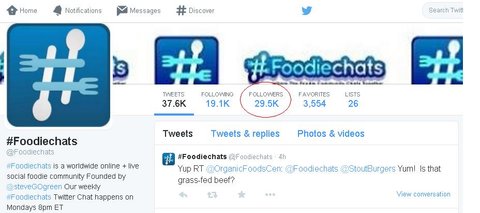
@Foodiechats has 29,500 followers, so if one of your tweets is retweeted by this user, your tweet will reach a significant number of people on Twitter.
Similarly examine other top users for this brand to see if any would help you achieve your business goals.
#4: Identify Google+ Influencers
Google Ripples is an integrated Google+ feature for Firefox and Chrome users. You can use this tool to find power influencers on Google+.
To see the ripples for a Google+ post, first find a post that says Shared Publicly. Then click the drop-down arrow in the upper-right corner of the post and choose View Ripples.
Next you'll see a Google Ripples diagram like the one below. Each ripple represents a public share of the post. The bigger the ripple, the greater the influence.
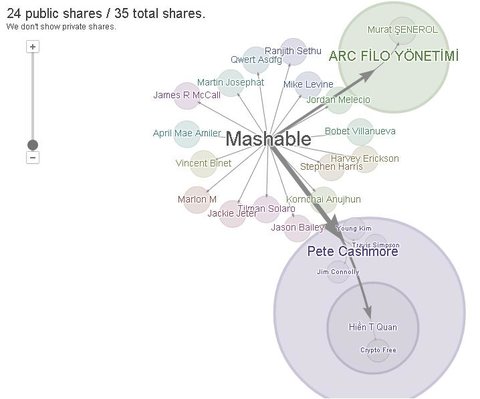
For this post, the largest ripple belongs to user Pete Cashmore. Look closely at the shares from his Google+ followers to identify the influencers in his follower circle.
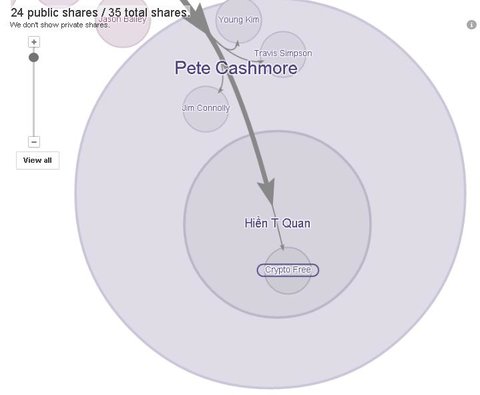
There are four public shares from Cashmore's post, and the biggest ripple belongs to user Hiền T Quan. The other three ripples are the same size, so for this post, Quan is the biggest influencer in Cashmore's circle.
After you've identified influencers, try to connect with them, offer useful information and start building relationships.
Create Buyer Personas
Now that you've gathered some data about other brands in your industry, how do you use this information to help your business?
Start by collating all of the data in a spreadsheet. Then try to find patterns in the online behavior of your target audience. For example, do these people share a certain level of education, specific interests, favorite restaurants, hobbies and so on?
When you're finished, your spreadsheet might look something like this:

Identifying buyer personas is important for your marketing campaigns. So how do you use all of this information to generate leads? There are two ways to do that:
- Target these groups for future ad campaigns. Almost every social network has an advertising feature. Look at your buyer personas and select the networks and targeting options accordingly.
- Also reach out to potential customers. The easiest way to do this is to identify their pain points and offer a solution. Find out which aspect of a competitor's service frustrates them. Start connecting but don't push sell.
Over to You
Today's online customers are smarter than ever. To attract their attention, your campaigns need to stand out from other brands in your industry and offer something that customers can't say no to.
I recommend that you research what your competitors are doing on social media every three to six months. Although this can be time-consuming, it's well worth the effort.
What do you think? Have you researched what's working for other brands in your industry? If so, how did you use this information? What tools do you use to research your competition? Please share your thoughts in the comments below.

Attention Agency Owners, Brand Marketers, and Consultants

Introducing the Marketing Agency Show–our newest podcast designed to explore the struggles of agency marketers.
Join show host and agency owner, Brooke Sellas, as she interviews agency marketers and digs deep into their biggest challenges. Explore topics like navigating rough economic times, leveraging AI, service diversification, client acquisition, and much more.
Just pull up your favorite podcast app, search for Marketing Agency Show and start listening. Or click the button below for more information.

